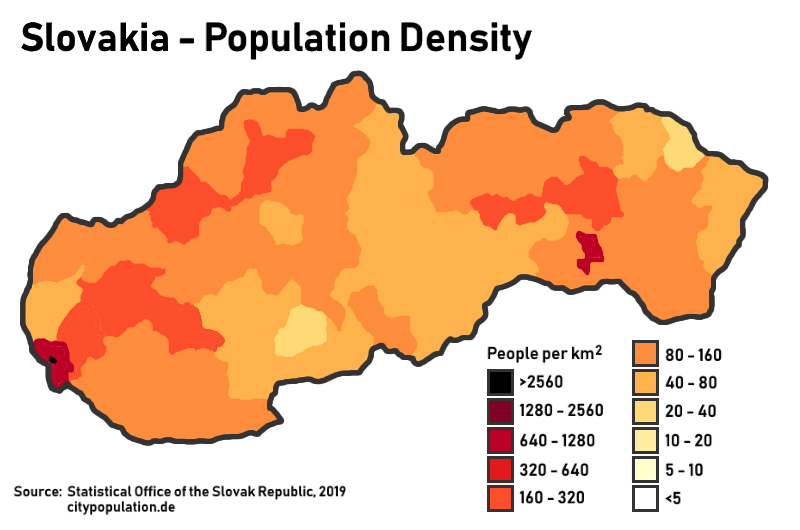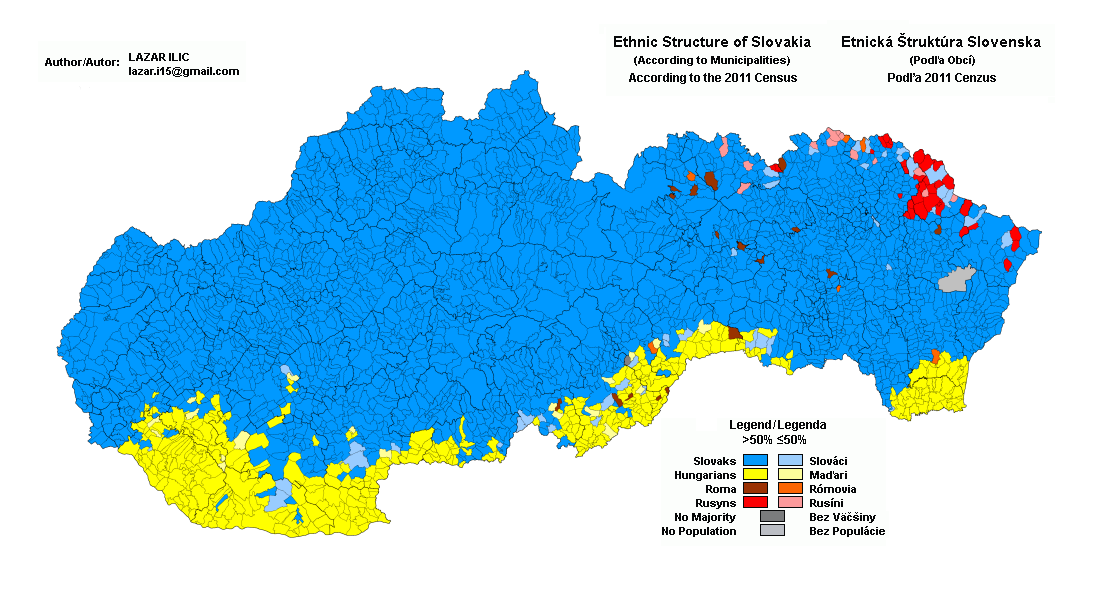|
Hliník Nad Hronom
Hliník nad Hronom ( hu, Geletnek) is a village and municipality in Žiar nad Hronom District in the Banská Bystrica Region of central Slovakia. Genealogical resources The records for genealogical research are available at the state archive "Statny Archiv in Banska Bystrica, Slovakia" * Roman Catholic church records (births/marriages/deaths): 1798-1905 (parish A) * Lutheran church records (births/marriages/deaths): 1812-1895 (parish B) See also * List of municipalities and towns in Slovakia This is an alphabetical list of the 2,891 Obec, obcí (singular ''obec'', "municipality") in Slovakia. [...More Info...] [...Related Items...] OR: [Wikipedia] [Google] [Baidu] |
Banská Bystrica Region
The Banská Bystrica Region ( sk, Banskobystrický kraj, ; hu, Besztercebányai kerület, ) is one of the eight regions of Slovakia. It is the largest region by area, and has a lower population density than any other region. The Banská Bystrica region was established in 1923; its borders were last adjusted in 1996. Banská Bystrica consists of 514 municipalities, 24 of which have town status. Its administrative center is the eponymous town of Banská Bystrica, which is also the region's largest town. Other important towns are Zvolen and Lučenec. Geography It is located in the central part of Slovakia and has an area of 9,455 km2. The region is prevailingly mountainous, with several ranges within the area. The highest of them are the Low Tatras in the north, where the highest point, Ďumbier, is located. Some of the mountain ranges in the west include Kremnica Mountains, Vtáčnik and Štiavnica Mountains. The Javorie and Krupina Plain ranges are located in the centre. ... [...More Info...] [...Related Items...] OR: [Wikipedia] [Google] [Baidu] |
Žiar Nad Hronom District
Žiar nad Hronom District ( sk, okres Žiar nad Hronom) is a district in the Banská Bystrica Region of central Slovakia. Until 1918, the district was part of the county of Tekov. Municipalities The names in bold represent towns. * Bartošova Lehôtka * Bzenica * Dolná Trnávka * Dolná Ves * Dolná Ždaňa * Hliník nad Hronom * Horná Ves * Horná Ždaňa *Hronská Dúbrava * Ihráč * Janova Lehota * Jastrabá *Kopernica * Kosorín *Krahule *Kremnica *Kremnické Bane *Kunešov * Ladomeská Vieska * Lehôtka pod Brehmi * Lovča * Lovčica-Trubín * Lúčky * Lutila * Nevoľné * Pitelová * Prestavlky * Prochot * Repište * Sklené Teplice * Slaská * Stará Kremnička * Trnavá Hora * Vyhne *Žiar nad Hronom Žiar nad Hronom (slang: Žiar, german: link=no, Heiligenkreuz, hu, Garamszentkereszt; until 1920 ''Svätý Kríž'' and until 1955 ''Svätý Kríž nad Hronom'') is a city in Banská Bystrica Region, Slovakia. Name development The name of the ... Dist ... [...More Info...] [...Related Items...] OR: [Wikipedia] [Google] [Baidu] |
Slovak Car Registration Plates
Vehicles registered in Slovakia are generally assigned to one of the districts ('' okres'') and since 1997, the licence plate coding ( sk, EČV, evidenčné číslo vozidla) generally consists of seven characters and takes the form XX-NNNLL, where XX is a two letter code corresponding to the district, NNN is three digit number and LL are two letters (assigned alphabetically). Appearance There are three design varieties that are in valid use. * Between 1 April 1997 and 30 April 2004, the plates contained the Coat of Arms of Slovakia in the top left corner and the country code SK in the bottom left. The two district identifiers were separated from the serials by a dash. * On 1 May 2004, Slovakia joined the European Union. In order to harmonise the visual look of the plates with the rest of the EU, the Slovak Coat of Arms was replaced by the so-called euroband, a vertical blue bar with representing the Flag of the EU. The country code SK was inserted into the euroband. The number 0 ... [...More Info...] [...Related Items...] OR: [Wikipedia] [Google] [Baidu] |
Demographics Of Slovakia
This article is about the demographic features of the population of Slovakia, including population density, ethnicity, education level, health of the populace, economic status, religious affiliations and other aspects of the population. The demographic statistics are from the Statistical Office of the SR, unless otherwise indicated. Population Total population: (as of ). Demographic statistics according to the World Population Review in 2021. *One birth every 10 minutes *One death every 9 minutes *One net migrant every 480 minutes *Net gain of one person every 1440 minutes Population overtime Population growth rate :-0.08% (2021 est.) Country comparison to the world: 202nd Fertility The total fertility rate is the number of children born per woman. It is based on fairly good data for the entire period. Sources: Our World In Data and Gapminder Foundation. 1.45 children born/woman (2021 est.) Country comparison to the world: 211th Mother's mean age at first ... [...More Info...] [...Related Items...] OR: [Wikipedia] [Google] [Baidu] |
Slovaks
The Slovaks ( sk, Slováci, singular: ''Slovák'', feminine: ''Slovenka'', plural: ''Slovenky'') are a West Slavic ethnic group and nation native to Slovakia who share a common ancestry, culture, history and speak Slovak. In Slovakia, 4.4 million are ethnic Slovaks of 5.4 million total population. There are Slovak minorities in many neighboring countries including Austria, Croatia, Czech Republic, Hungary, Poland, Romania, Serbia and Ukraine and sizeable populations of immigrants and their descendants in Australia, Canada, France, Germany, United Kingdom and the United States among others, which are collectively referred to as the Slovak diaspora. Name The name ''Slovak'' is derived from ''*Slověninъ'', plural ''*Slověně'', the old name of the Slavs (Proglas, around 863). The original stem has been preserved in all Slovak words except the masculine noun; the feminine noun is ''Slovenka'', the adjective is ''slovenský'', the language is ''slovenčina'' and the country ... [...More Info...] [...Related Items...] OR: [Wikipedia] [Google] [Baidu] |
Czech Diaspora
The Czech diaspora refers to both historical and present emigration from the Czech Republic, as well as from the former Czechoslovakia and the Czech lands (including Bohemia, Moravia and Silesia). The country with the largest number of Czechs living abroad is the United States. Communities * Austria (Vienna) * Czechs and Slovaks in Bulgaria * Czechs of Croatia * Czechs in Poland * Czechs in Romania * Czechs in Serbia * Czech New Zealanders * Czech South Africans * Czechs in Ukraine * Czech migration to France * Czech migration to the United Kingdom * Czech diaspora in Israel * Czech Americans (Baltimore, Omaha, Texas) * Czech Canadians * Czech immigration to Mexico * Czechs in Argentina * Czech Brazilian * Czech Australians Distrubution by country Here is the top 10 countries with most Czech immigrants. : 503,000 : 89,000 : 82,000 : 65,000 : 36,000 : 21,000 : 16,000 : 14,000 : 11,000 : 11,000 Famous people of Czech descent * Madeleine Albright, the first ... [...More Info...] [...Related Items...] OR: [Wikipedia] [Google] [Baidu] |
Romani People In Slovakia
According to the last census from 2021, there were 67,179 persons counted as Romani people in Slovakia, or 1,23% of the population. History Migration to Slovakia The first record of sightings of small groups of Romani within the area of present-day Slovakia are from 1322 AD, when the region was part of the Kingdom of Hungary. Major waves of Romani nomads were recorded from 1417 onwards. In 1423 they received a decree from the Hungarian king Sigismund of Luxemburg at Szepes Castle, granting them Europe-wide right of passage and the right to settle. They proved to be useful metal workers for the royal armies fighting the Turks. Through the ensuing centuries, whilst in western and central Europe Romani were treated violently and often expelled, the Hungarian Kingdom and Habsburg Monarchy in general provided a tolerant and stable safe-haven for the Romani community. In the 18th century, Joseph II of the house of Habsburg attempted to 'civilize' the Romani, for example by prohibit ... [...More Info...] [...Related Items...] OR: [Wikipedia] [Google] [Baidu] |
Hungarians In Slovakia
Hungarians are the largest ethnic minority in Slovakia. According to th2021 Slovak census 422,065 people (or 7.75% of the population) declared themselves Hungarians, while 462,175 (8.48% of the population) stated that Hungarian was their mother tongue. Hungarians in Slovakia are concentrated mostly in the southern part of the country, near the border with Hungary. They form the majority in two districts, Komárno and Dunajská Streda. History The First Czechoslovak Republic (1918–1938) Origins of the Hungarian minority After the defeat of the Central Powers on the Western Front in 1918, the Treaty of Trianon was signed between the winning Entente powers and Hungary in 1920 at the Paris Peace Conference. The treaty greatly reduced the Kingdom of Hungary's borders, including ceding all of Upper Hungary to Czechoslovakia, in which Slovaks made up the dominant ethnicity. In consideration of the strategic and economic interests of their new ally, Czechoslovakia, the victor ... [...More Info...] [...Related Items...] OR: [Wikipedia] [Google] [Baidu] |
Catholic Church In Slovakia
The Catholic Church in Slovakia is part of the worldwide Catholic Church, under the spiritual leadership of the Pope in Rome. Around 55.8% of the total population is Latin (Roman) Catholic and another 3.8% is Greek Catholic. The country is divided into 8 Latin dioceses including 3 archdioceses, and there is also a separate Metropolitan jurisdiction for those of the Byzantine Rite, see Slovak Greek Catholic Church. Taking the percentage of membership in the Catholic Church as an indicator, Slovakia is the third most Catholic Slavic country, after Poland and Croatia. Structure Roman Catholic *Archdiocese of Bratislava with the following suffragans: **Archdiocese of Trnava **Diocese of Nitra **Diocese of Žilina **Diocese of Banská Bystrica *Archdiocese of Košice with the following suffragans: **Diocese of Spiš **Diocese of Rožňava *Military Ordinariate of Slovakia Greek Catholic * Archeparchy of Prešov with the following suffragans: **Eparchy of Bratislava **Eparchy ... [...More Info...] [...Related Items...] OR: [Wikipedia] [Google] [Baidu] |
Evangelical Church Of The Augsburg Confession In Slovakia
The Evangelical Church of the Augsburg Confession in Slovakia (in Slovak ''Evanjelická cirkev augsburského vyznania na Slovensku'', ECAV) is the only Lutheran church in Slovakia. The Church is a member of the Ecumenical Council of Churches in Slovakia, and the Lutheran World Federation (Central Eastern Europe Region). History of the church The church was established in 1922 following the dissolution of the Austro-Hungarian empire. The church opposed the Nazis in World War II. After the Communist coup d'état of 1948, the Lutheran Church lost control over its schools and social services, and many church periodicals ceased to be published. More than one hundred clergy were persecuted; many were imprisoned and restrained from exercising their ministry. Until 1989 the Church lived under the strict control of the regime and in 1993 the Synod adopted a new constitution. Number of adherents and beliefs The ECAV is the second largest church in Slovakia (c. 7% of population). It cons ... [...More Info...] [...Related Items...] OR: [Wikipedia] [Google] [Baidu] |
Non-religious
Irreligion or nonreligion is the absence or rejection of religion, or indifference to it. Irreligion takes many forms, ranging from the casual and unaware to full-fledged philosophies such as atheism and agnosticism, secular humanism and antitheism. Social scientists tend to define irreligion as a purely naturalist worldview that excludes a belief in anything supernatural. The broadest and loosest definition, serving as an upper limit, is the lack of religious identification, though many non-identifiers express metaphysical and even religious beliefs. The narrowest and strictest is subscribing to positive atheism. According to the Pew Research Center's 2012 global study of 230 countries and territories, 16% of the world's population does not identify with any religion. The population of the religiously unaffiliated, sometimes referred to as "nones", has grown significantly in recent years. Measurement of irreligiosity requires great cultural sensitivity, especially outside th ... [...More Info...] [...Related Items...] OR: [Wikipedia] [Google] [Baidu] |
.jpg)




.jpg)